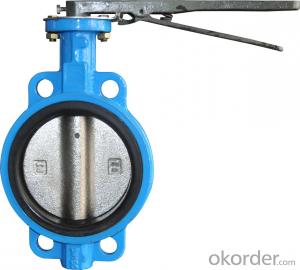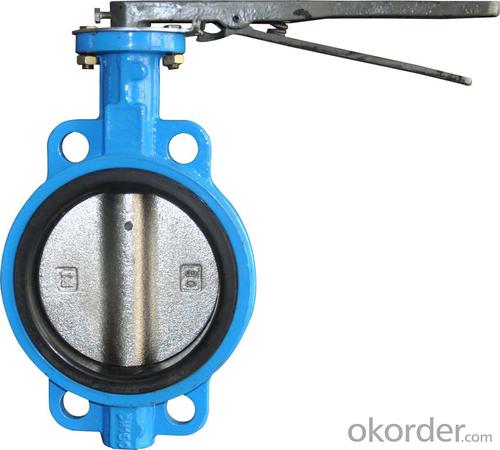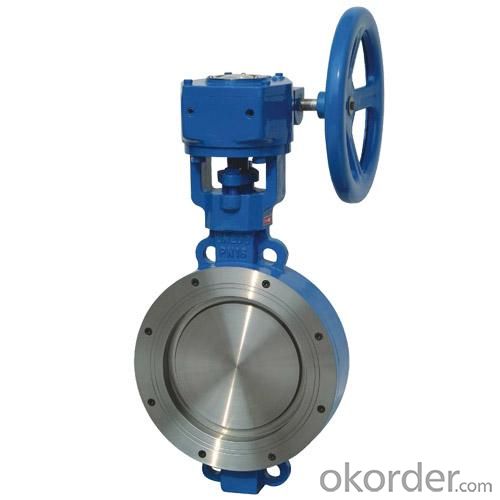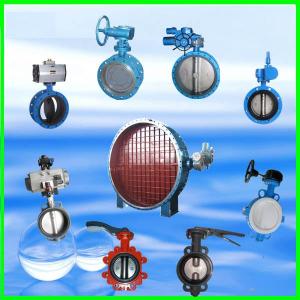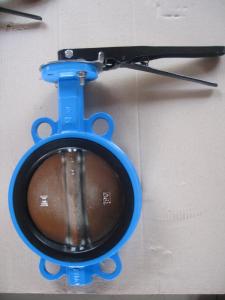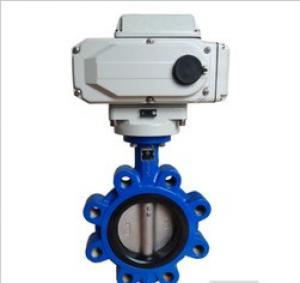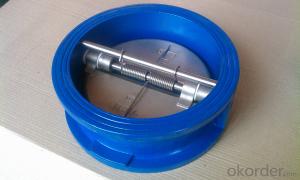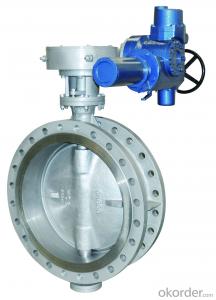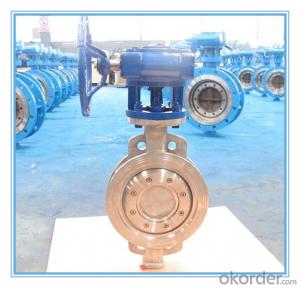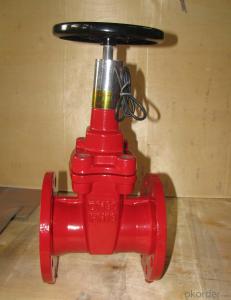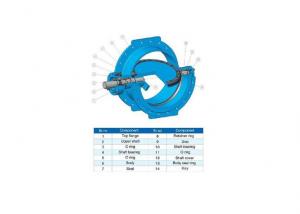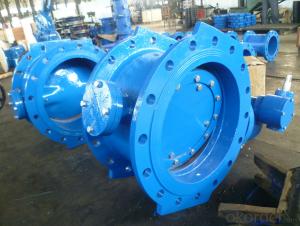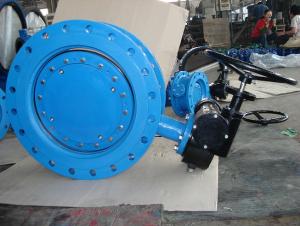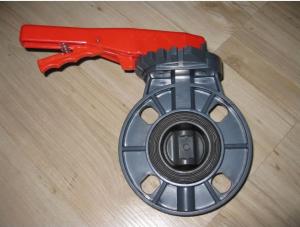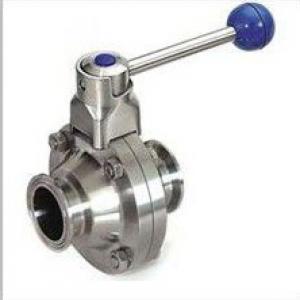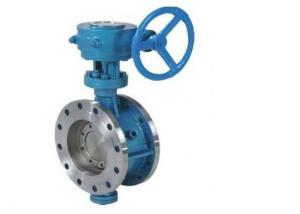Butterfly Valve Double Flanged Eccentric Rubber Seated
- Loading Port:
- China main port
- Payment Terms:
- TT OR LC
- Min Order Qty:
- 500 set
- Supply Capability:
- 5000 set/month
OKorder Service Pledge
OKorder Financial Service
You Might Also Like
1.Manual Wafer Butterfly Valve Description:A butterfly valve is a valve which can be used for isolating or regulating flow. The closing mechanism takes the form of a disk. Operation is similar to that of a ball valve, which allows for quick shut off. Butterfly valves are generally favored because they are lower in cost to other valve designs as well as being lighter in weight, meaning less support is required. The disc is positioned in the center of the pipe, passing through the disc is a rod connected to an actuator on the outside of the valve. Rotating the actuator turns the disc either parallel or perpendicular to the flow. Unlike a ball valve, the disc is always present within the flow, therefore a pressure drop is always induced in the flow, regardless of valve position.
2.Main Features of the Manual Wafer Butterfly Valve
1)Disc has two-way bearing, perfect seal, without leakage under the pressure test.
2)Flow curve tending to straight-line. Excellent regulation performance.
3)Various kinds of materials, applicable to different medium.
4)Long service life. Standing the test of ten thousands opening and closing operation.
5)Can be used in cutting off and regulation medium
3. Manual Wafer Butterfly Valve Images:
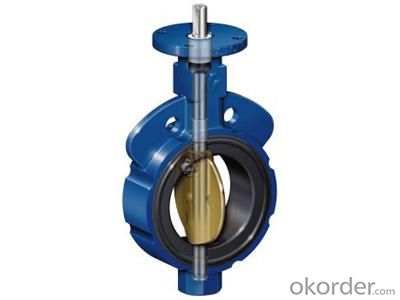
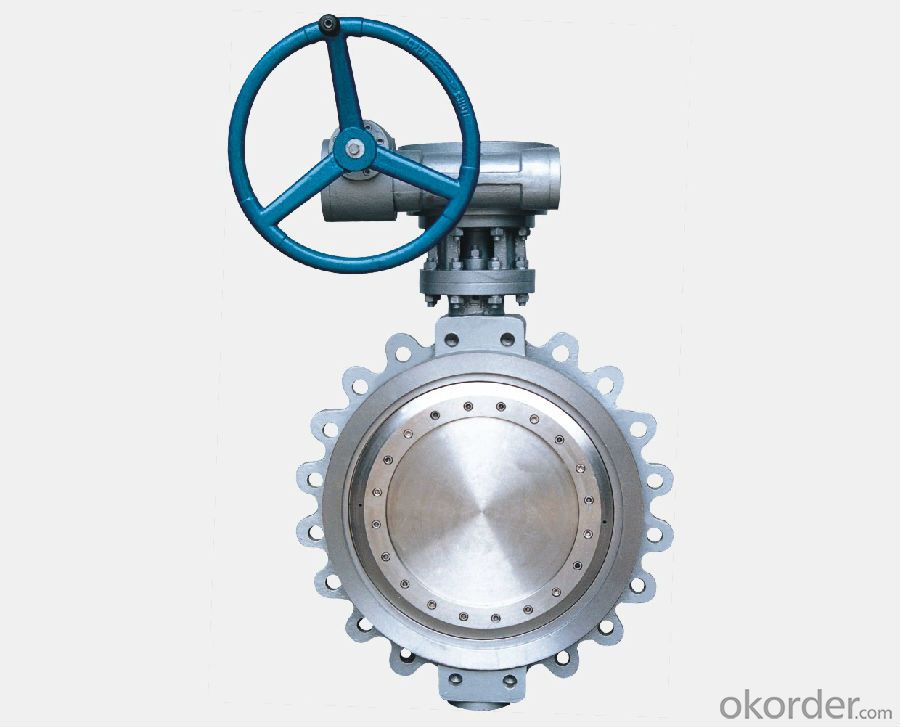
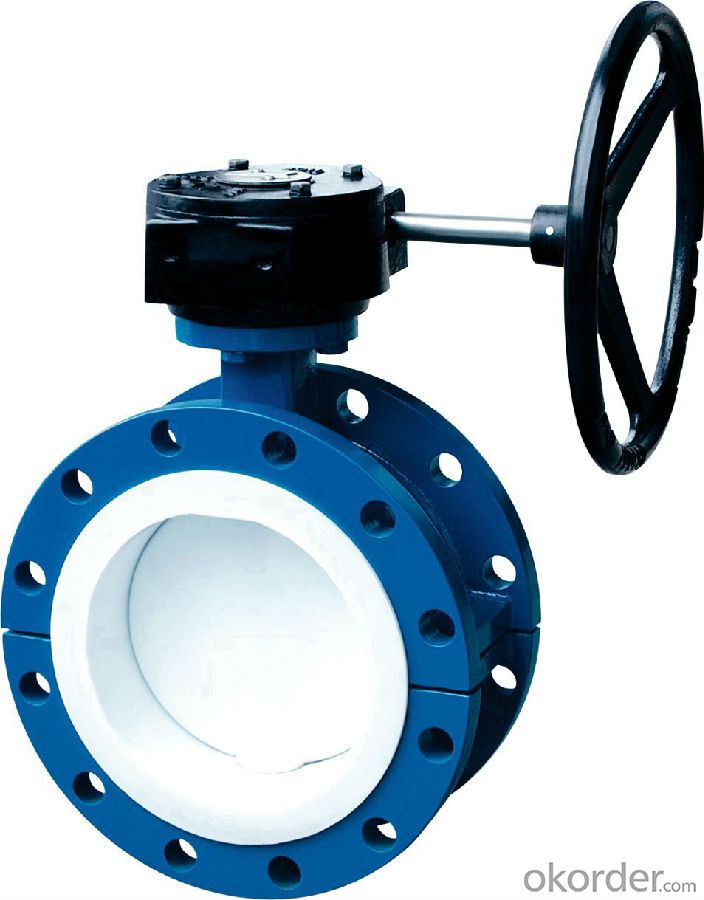
4.Manual Wafer Butterfly Valve Specification:
Size | DN40-DN1200 |
End flange | ANSI B 16.1, EN 1092, AS 2129 |
Face to face | ANSI B 16.10; EN 558-1 Series 20 |
Top flange | ISO 5211 |
Normal Pressure | DN40-DN600 PN1.0/1.6MPa (150/200PSI) DN700-DN1200 PN1.0MPa (150PSI)
|
Body | CI/DI/WCB/ALB/CF8/CF8M
|
Disc | DI/ALB/Rubber lined Disc/ 1.2501/CF8M/1.4529/CF8/Hastelloy Alloy/Monel |
Stem: | 416/304/316/431/17-4PH |
Seat | NR/Hypalon/EPDM/Neoprene/NBR/Wear-Resistant EPDM/Viton/Silicon/Heat-Resistant EPDM/White NBR/White EPDM/EPDM (NSF)/PTFE |
Suitable Temperature | -40c~80c
|
Apply | Fresh water, sewage, sea water, air, vapor, food, medicine, oils, alkalis, salt etc. |
5.FAQ
1. What is manual wafer butterfly valve?
Wafer style is the more common of the two and is less expensive than the lug style. The wafer style butterfly valve is just about the standard. It ís so common that no one even bothers to use the word "wafer" when ordering a butterfly valve. It is taken for granted that if a butterfly valve is ordered, a wafer style will be received.
2. How about the Installation of the Wafer Style Butterfly Valve?Butterfly valves are installed by inserting the valve between two flanges using bolts or studs and nuts to hold it all together. This type of installation, of course, makes it impossible to disconnect just one side of the piping system from the valve. That benefit is received using the lug style valve.
- Q: What does "D341X-16Q" mean?What do D341-16Q letters and numbers mean for butterfly valves?
- D - valve type code: Butterfly valve;3 - valve drive mode code: worm gear;4 - valve connection form code: flange;1 - valve structure type code: vertical plate type;X - seat sealing surface or lining material code: rubber;16 - nominal pressure value: PN1.6MPa;Q - body material code: QT400 - 15.
- Q: How many kinds of butterfly valves are there?
- Also known as butterfly valve, control valve has a simple structure, can be used for low pressure pipeline valve switching control is closed parts (disc or disc) is a disk, around the valve axis to achieve the opening and closing a valve, the valve can be used to control the flow of air, water, steam steam, all kinds of corrosive medium, mud, oil, metals and radioactive liquid media and other types of fluid. On the pipeline, mainly from cutting and throttling. Butterfly valve headstock is a disc shaped disc, in the valve body around its own axis of rotation, so as to achieve the purpose of opening or closing or regulation.[structure]The utility model is mainly composed of a valve body, a valve stem, a butterfly plate and a sealing ring. The valve body is cylindrical and has short axial length and is internally provided with a butterfly plate.
- Q: Butterfly valve flow direction is single or two-way?
- To see your butterfly type low voltage soft sealing clamp / flange butterfly valve is a two-way flow; and high pressure valve seal to choose clip / flanged butterfly valve, these are single direction flow, the valve body is provided with a flow indicator! There are so many factors that you have to say, such as working conditions, pressure, temperature, design concept and so on.
- Q: Have an iron block, aluminum heads, solid roller lifters, Jessel rocker shafts, what should my valve clearances be cold, and hot??
- Well, generally it's going to be .030 intake and exhaust (hot). Adjust to those clearances cold then recheck at operating temp. But it would really help to know year, make, cu. in., which aftermarket heads, to be absolutely sure. On some engines it is .024 intake / .030 exhaust and so on, depends on the lifters and valve train geometry.. What brand of lifters and cam profile? Usually they will specify valve lash and adjusting procedures. Edit: Wow, kinda' tight valve lash, krazybob, ( might be a lttle tough on the old cam lobes), and then there is your timing numbers / advice with absolutely no details to base it on ( H.E.I.?..which brand? / mechanical advance curve?, and vacuum advance numbers?, cam timing, brand of lifters, cam specs, rocker arm ratio)...Look, S-51D, the best idea is to Do- It- Right using the correct adjustment specs. The data is out there, once the configuration is identified.
- Q: The difference between gate valve and butterfly valve, as well as cut-off valve, what are their applicable conditions? Advantages and disadvantages?
- Without strict conditions and advantages and disadvantages, of course, the equipment requires a relatively high degree of automatic control. I can check it out on Baidu.
- Q: What's the difference between cut-off valve, gate valve and butterfly valve? What's the difference in the working principle?
- Gate valve, also known as gate valve, is a widely used valve. Its closing principle is that the gate sealing surface and the valve seat sealing surface are smooth and smooth, and they fit together to prevent the flow of the medium, and rely on the die shape of the top die, spring or gate to enhance the sealing effect. It mainly cuts off in the pipeline. The cut-off valve, also called the door, is the most widely used as a valve, it is popular is because the process of opening and closing the sealing surface friction between the small, more durable, highly open small, easy manufacture, convenient maintenance, not only for low pressure, but also suitable for high pressure. Butterfly valve with light characteristics, more than other valves to save material, simple structure, quick opening and closing, cutting and throttling can be used, the fluid resistance is small, labor-saving operation. Butterfly valve can be made into large caliber. Where you can use the butterfly valve, it is best not to make the gate valve, because the valve is more economical than the gate valve, and the regulation is good. At present, butterfly valves are widely used in hot water pipelines.
- Q: i was changing valve seals and two dropped i can see the head of the valve but a magnet wont pull them up i put air the spark plug hole too but no luck 1985 ford bronco II
- Your going to have to pull the heads.
- Q: Butterfly valve network and ordinary butterfly what is the difference?
- Butterfly valve used in the network structure, closed with the more closed, the more tight function, reliable sealing performance, after opening and closing, make sure that the cover is completely out of touch, to ensure that the sealing surface is not damaged. The sealing surface is made of stainless steel, corrosion resistant, high temperature resistant, long service life. With two-way sealing function, medium flow is not affected by the installation restrictions (if only one-way control medium should be used to seal the installation direction) is not affected by the spatial units, can be installed in any direction.
- Q: Hi guys, i asked a question before pertaining to the amount of cylinders and asking if it meant V4 or V6 or whatever.I actually meant to say VALVES, not cylinders. IS there a direct correlation between VALVES and Clyinders..Eg, My car, which is a 2001 Neon LE states right on the engine block quot;16 VALVEquot; in bright letters. I am sure this is a 4 cylinder engine. I haven't had a car that broadcasted the number of VALVES before. Another car I had broadcast that is was a 3.3 Liter V6 right on the engine.Is there a mathematical relationship between VALVES and cylinders, or would my car be braodcasting 16 VALVES, because a 4 cylinder doesn't typically HAVE 16 valves, or what is the story??Recently, I was looking at an altima, and it said 24 valves. Can you tell just by the number of valves if it is a 4 cylinder or 6 cylinder or whatever??Thanks.
- All engines require one intake and one exhaust valve per cylinder. Period. That said, some engines are equipped with two intake and two exhaust valves per cylinder. So a four cylinder engine will be labeled as either an 8 valve or a 16 valve engine. And so forth for a six cylinder or an eight cylinder engine. In the motorcycle world, there are the rare engines equipped with either three valves per cylinder or five valves per cylinder. So if a manufacturer is advertising the number of valves per cylinder right on the car or engine, you can bet that engine is equipped with four valves per cylinder. 4 valves per cylinder is more expensive to manufacture than a 2 valve engine, but there is better performance with 4 valves per cylinder. To the last part of your question, 24 valves equates to a 6 cylinder engine. 24/4 = 6 (cylinders). I know of no engines with 6 valves per cylinder. Also Altimas are not available with 8 cylinder engines. Good Luck
- Q: I have a good set of #142 Pontiac heads with small diameter valves. I want to have the heads enlarged to accept the larger Pontiac valves, and I have the larger exhaust valves out of #13 heads and the larger intakes from 6X8 heads. The valves appear ok and shiny on the stems
- Roll the valves by the stems on a perfectly flat table. If there is no wobble, your valves are most likely not bent. Take them to a machine shop and have them checked for imperfections and reground and they'll be good as new.
Send your message to us
Butterfly Valve Double Flanged Eccentric Rubber Seated
- Loading Port:
- China main port
- Payment Terms:
- TT OR LC
- Min Order Qty:
- 500 set
- Supply Capability:
- 5000 set/month
OKorder Service Pledge
OKorder Financial Service
Similar products
Hot products
Hot Searches
Related keywords
